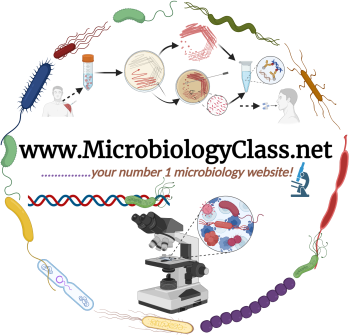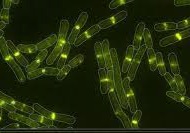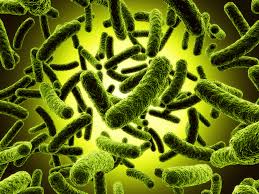Microorganisms, often referred to as microbes, are tiny life forms that are invisible to the naked eye. They encompass a vast diversity of species including bacteria, fungi, viruses, algae, archaea, and protozoa. Although popularly associated with disease and decay, microorganisms are foundational to life on Earth. Their roles span ecosystems, industries, agriculture, medicine, and even cutting-edge technologies such as biotechnology and synthetic biology. Mankind has long harnessed the power of microorganisms for beneficial purposes—from baking bread and brewing wine to developing life-saving vaccines and antibiotics.
Microorganisms are ubiquitous; they inhabit virtually every environment on the planet—from deep ocean hydrothermal vents and acidic hot springs to the Arctic ice and even the human body. Their omnipresence and adaptability are key to their profound influence on life and ecosystems. This document explores the significance, applications, and implications of microorganisms, underscoring both their beneficial and harmful impacts.
1. Microorganisms and Human Health
Microorganisms have a complex and multifaceted relationship with human health. While some microbes are notorious for causing diseases, many others play essential and beneficial roles in maintaining our well-being. This dual nature makes the study of microorganisms vital in understanding human health, disease prevention, and therapeutic development.
A. Pathogenesis and Disease
Microorganisms such as bacteria, viruses, fungi, and protozoa are the primary agents responsible for infectious diseases in humans. These pathogenic microbes have evolved numerous strategies to invade, survive, and multiply within the human host, often causing illness and sometimes severe or fatal outcomes.
Bacterial pathogens cause a wide range of illnesses, from mild infections like strep throat and urinary tract infections to life-threatening conditions such as tuberculosis, cholera, and bacterial meningitis. Tuberculosis, caused by Mycobacterium tuberculosis, remains one of the deadliest infectious diseases globally, particularly in developing countries. Other bacterial pathogens, such as Salmonella and Escherichia coli, are major causes of foodborne illnesses.
Viruses, on the other hand, are obligate intracellular parasites that hijack the host’s cellular machinery to replicate. Viral diseases vary from the common cold, caused by rhinoviruses, to more serious diseases like influenza, HIV/AIDS, Ebola, and the recent global pandemic caused by the SARS-CoV-2 virus (COVID-19). Viruses can cause both acute infections and chronic conditions, sometimes triggering oncogenesis or autoimmune reactions.
Fungal infections generally affect immunocompromised individuals more severely but can also cause diseases such as athlete’s foot, candidiasis, and more invasive systemic infections like aspergillosis. Fungi can be opportunistic pathogens and are increasingly important in hospital-acquired infections.
Protozoan parasites such as Plasmodium species (causing malaria), Entamoeba histolytica (causing amoebiasis), and Trypanosoma (causing sleeping sickness) also significantly impact global health, particularly in tropical and subtropical regions. Malaria alone causes hundreds of thousands of deaths annually, predominantly among children in sub-Saharan Africa.
Moreover, zoonotic diseases, which originate in animals and are transmitted to humans, underscore the interconnectedness of human and animal health. Examples include rabies, avian influenza, and coronaviruses like SARS and MERS. The ability of microbes to cross species barriers presents ongoing challenges for disease surveillance and outbreak control, emphasizing the importance of a One Health approach.
B. Microbiome and Normal Microflora
Contrary to the traditional view of microbes as harmful invaders, the human body harbors an astonishingly diverse and dense community of microorganisms, collectively termed the human microbiota or normal microflora. These beneficial microbes colonize almost every body surface exposed to the environment — including the skin, oral cavity, gastrointestinal tract, respiratory tract, and genitourinary system.
Among these, the gut microbiota is the most extensively studied and arguably the most important to human health. Trillions of bacteria, along with fungi, archaea, and viruses, reside in the gut, forming a dynamic ecosystem that influences digestion, nutrient absorption, immune system development, and pathogen defense.
One of the primary roles of the gut microbiota is the breakdown of complex dietary components that human enzymes cannot digest, such as certain fibers and polysaccharides. Through fermentation, gut bacteria produce short-chain fatty acids (SCFAs) like acetate, propionate, and butyrate, which serve as energy sources for intestinal cells and have systemic anti-inflammatory effects.
The microbiota also synthesizes essential vitamins, including vitamin K (important for blood clotting) and several B vitamins (such as B12, folate, and biotin). Furthermore, the microbiome plays a crucial role in immune modulation, training the immune system to distinguish between harmless and harmful agents and thus helping to prevent autoimmune diseases and allergies.
Competitive exclusion is another critical mechanism by which the normal microflora protects against pathogens. By occupying niches and consuming available nutrients, beneficial microbes prevent colonization and overgrowth of harmful organisms. For example, Lactobacillus species in the vaginal microbiota help maintain an acidic environment that inhibits the growth of pathogenic bacteria.
The colonization process begins immediately after birth, with microbial communities establishing themselves during delivery and rapidly evolving throughout infancy and adulthood. The method of delivery (vaginal birth vs. cesarean section), diet (breastfeeding vs. formula), environment, antibiotic use, and other factors influence the composition and diversity of the microbiome.
Dysbiosis, or an imbalance in the microbial community, has been increasingly associated with numerous health problems. Alterations in gut microbiota composition have been linked to metabolic disorders such as obesity and type 2 diabetes, gastrointestinal diseases like inflammatory bowel disease (IBD) and irritable bowel syndrome (IBS), and even neurological conditions including depression, anxiety, and autism spectrum disorders.
Research continues to unravel the complex interactions between the microbiota and human health, revealing potential for novel therapies. Probiotics, prebiotics, and fecal microbiota transplants are examples of microbiome-targeted interventions designed to restore healthy microbial balance.
2. Microorganisms in Medicine and Pharmaceuticals
Microorganisms have revolutionized the field of medicine and pharmaceuticals, serving as both the source and inspiration for countless therapies that have saved millions of lives worldwide. From the discovery of antibiotics to the development of advanced vaccines and probiotics, the microscopic world plays a pivotal role in modern healthcare. Below is an extensive exploration of the various ways microorganisms contribute to medicine and pharmaceuticals.
A. Antibiotics and Antimicrobials
One of the most groundbreaking medical advancements of the 20th century was the discovery and use of antibiotics, a class of drugs that inhibit or kill bacteria responsible for infectious diseases. The story began with Alexander Fleming’s serendipitous discovery of penicillin in 1928, derived from the mold Penicillium notatum. This discovery paved the way for a new era where bacterial infections, once often fatal, became treatable conditions.
Since penicillin, numerous antibiotics have been isolated from microorganisms, especially from the genus Streptomyces, a group of soil-dwelling bacteria renowned for producing a diverse array of bioactive compounds. Other bacterial genera like Bacillus, Micromonospora, and Actinomyces, as well as various fungi, have also been important sources of antibiotics. These compounds work through diverse mechanisms such as inhibiting bacterial cell wall synthesis (e.g., penicillins and cephalosporins), protein synthesis (e.g., tetracyclines, aminoglycosides), nucleic acid synthesis (e.g., quinolones), or metabolic pathways (e.g., sulfonamides).
Beyond antibiotics, microorganisms have yielded a broad spectrum of antimicrobial agents targeting not just bacteria but also fungi, viruses, and parasites. For instance:
- Antifungals like amphotericin B and echinocandins come from fungi or bacterial metabolites and are used to treat systemic fungal infections.
- Antiviral drugs such as acyclovir and zidovudine were developed based on knowledge of viral replication and microbial biochemistry.
- Antiparasitic compounds include artemisinin, derived from Artemisia annua (a plant, but its development is heavily influenced by microbial interactions), used against malaria.
The study of microbial metabolites and secondary compounds continues to be a major research focus under the field of pharmacognosy, which aims to discover new therapeutic agents from natural sources. With rising concerns over antibiotic resistance, scientists are mining the microbial world, including extreme environments, for novel antimicrobials to counteract multidrug-resistant pathogens.
B. Vaccines
Vaccines represent one of the most effective medical interventions to prevent infectious diseases, and microorganisms have been central to their development. Vaccines work by exposing the immune system to a harmless form or part of a pathogen, thereby training the body to recognize and fight the real pathogen in the future.
There are several types of vaccines derived from microorganisms:
- Live attenuated vaccines contain weakened forms of bacteria or viruses that can still replicate without causing disease. Examples include the measles, mumps, and rubella (MMR) vaccine, as well as the oral polio vaccine. These vaccines generally induce a strong and long-lasting immune response.
- Inactivated vaccines use killed microorganisms or inactivated viral particles, which cannot replicate but still elicit an immune response. Examples are the inactivated polio vaccine and hepatitis A vaccine.
- Subunit and recombinant vaccines contain only specific pieces of the pathogen, such as proteins or polysaccharides. These components are often produced by genetically engineered microorganisms. For example, the hepatitis B vaccine is a recombinant vaccine produced using yeast cells.
- More recently, mRNA vaccines like those developed for COVID-19 represent a new frontier in vaccinology. These vaccines use synthetic mRNA sequences encoding viral proteins (such as the spike protein of SARS-CoV-2) to stimulate the immune system. While not derived directly from microorganisms, the understanding of viral genetics and structure—gained through microbial research—was essential for their rapid development.
The ability to manipulate microorganisms or their genetic material has accelerated vaccine development, enabling quick responses to emerging infectious diseases. Vaccine technology continues to evolve with microbial genomics and synthetic biology offering new possibilities for safer, more effective vaccines.
C. Probiotics and Therapeutic Applications
In addition to preventing and treating infectious diseases, microorganisms themselves can serve as therapeutic agents. Probiotics are live microorganisms, typically bacteria such as Lactobacillus and Bifidobacterium, which when administered in adequate amounts confer health benefits to the host. These beneficial microbes help maintain or restore the natural balance of the gut microbiota, which is crucial for digestion, immune function, and protection against pathogens.
Probiotics are widely used to improve gastrointestinal health, treat diarrhea (including antibiotic-associated diarrhea), and manage inflammatory bowel diseases. They are also being explored for broader applications such as modulating the immune system, improving mental health (gut-brain axis), and even influencing metabolic diseases.
Recent advances in microbiome research—the study of the entire microbial community inhabiting the human body—have shed light on the complex interplay between host and microbes. This has led to the development of innovative therapeutic strategies including:
- Fecal Microbiota Transplantation (FMT): This involves transferring stool from a healthy donor into the gastrointestinal tract of a patient to restore a balanced microbiome. FMT has shown remarkable success in treating recurrent Clostridium difficile infections, which are often resistant to antibiotics.
- Microbial-derived bioactive compounds: Researchers are exploring metabolites produced by commensal microbes that may have anti-inflammatory, anti-cancer, or immune-modulating properties.
Microorganisms are indispensable in the field of medicine and pharmaceuticals. From the discovery of antibiotics that revolutionized infectious disease treatment, to vaccines that have eradicated or controlled deadly diseases, and probiotics that promote health and combat dysbiosis, the tiny microbial world continues to provide vast therapeutic potential. As science advances, tapping into the microbial universe promises to unlock new medicines and therapies that will shape the future of healthcare.
3. Microorganisms in Agriculture
A. Nitrogen Fixation
Microorganisms play essential roles in enhancing soil fertility and plant growth. Nitrogen-fixing bacteria such as Rhizobium form symbiotic relationships with leguminous plants, converting atmospheric nitrogen into ammonia—a form usable by plants. This process is critical because nitrogen is a limiting nutrient in many ecosystems.
B. Biocontrol and Biofertilizers
Certain microorganisms serve as biocontrol agents against pests and plant pathogens. For example, Bacillus thuringiensis produces a toxin harmful to insect larvae but safe for humans and other animals. Fungi like Trichoderma can inhibit the growth of plant-pathogenic fungi. Similarly, biofertilizers containing beneficial microbes such as Azospirillum, Azotobacter, and phosphate-solubilizing bacteria enhance plant growth and crop yield sustainably, reducing dependency on chemical fertilizers.
C. Soil Health and Decomposition
Decomposer microorganisms, including bacteria and fungi, break down dead organic matter, returning essential nutrients such as carbon, nitrogen, and phosphorus to the soil. This decomposition process is essential for nutrient recycling and soil structure maintenance, enabling continued agricultural productivity.
4. Microorganisms in Food and Beverage Production
Microorganisms have long been employed in food processing and preservation:
- Fermentation: Microbes convert sugars into alcohol, acids, and gases. This process is utilized to produce bread (yeast), cheese (lactic acid bacteria), yogurt, vinegar, beer, wine, and pickles.
- Single Cell Proteins (SCPs): Microbial biomass itself can serve as a protein-rich food source. SCPs derived from algae (Spirulina), fungi (Fusarium), and yeast (Candida) are being explored to address malnutrition and food insecurity.
- Food Preservation: Lactic acid bacteria produce antimicrobial compounds like bacteriocins, which inhibit spoilage and pathogenic organisms.
Modern biotechnology is also introducing genetically modified microorganisms to create novel food ingredients and enhance nutritional content.
5. Environmental Applications
A. Biodegradation and Bioremediation
Microorganisms are natural recyclers of organic and inorganic waste. They degrade pollutants such as hydrocarbons, heavy metals, and pesticides, making them crucial for environmental cleanup. Bioremediation uses microbial metabolism to detoxify contaminated sites, including oil spills and industrial effluents.
For instance, Pseudomonas species are known to degrade petroleum, while Deinococcus radiodurans can survive radiation and is used in radioactive waste cleanup. Such environmentally friendly technologies reduce reliance on harsh chemicals and physical remediation methods.
B. Wastewater Treatment
In sewage treatment plants, microbial communities degrade organic matter in wastewater, converting harmful substances into innocuous end-products. Activated sludge systems, trickling filters, and anaerobic digesters rely on diverse microbial consortia for effective treatment. Methanogens, a type of archaea, are involved in the final stages of anaerobic digestion, producing methane gas as a byproduct, which can be harvested as bioenergy.
6. Microorganisms in Industry and Biotechnology
A. Industrial Fermentation
Microbial fermentation is the backbone of numerous industries. Bacteria and fungi are employed to produce organic acids (e.g., lactic acid, citric acid), enzymes (e.g., amylases, proteases, cellulases), and bioactive compounds. Enzymes produced by genetically engineered microbes are used in textile, paper, detergent, and leather industries to improve efficiency and sustainability.
B. Biofuels and Energy Production
Microorganisms contribute to sustainable energy production. Algae and cyanobacteria are used to produce biodiesel due to their high lipid content. Anaerobic bacteria and archaea in digesters convert biomass into biogas (a mixture of methane and CO₂), which is used as a renewable energy source.
C. Synthetic Biology and Genetic Engineering
Synthetic biology harnesses the precision of genetic engineering to create custom-designed microbes capable of producing pharmaceuticals, vitamins, synthetic polymers, and biosensors. Escherichia coli and Saccharomyces cerevisiae are commonly used chassis organisms in labs worldwide. CRISPR-Cas systems, derived from bacterial defense mechanisms, have revolutionized gene editing, offering tools for both basic research and therapeutic interventions.
7. Microorganisms and Ecosystem Stability
Microorganisms are foundational to all biogeochemical cycles:
- Carbon Cycle: Microbes decompose organic matter, releasing CO₂ through respiration. Methanogens produce methane under anaerobic conditions, which is later oxidized by methanotrophs.
- Nitrogen Cycle: In addition to nitrogen fixation, microbes mediate nitrification (conversion of ammonia to nitrate), denitrification (nitrate to nitrogen gas), and ammonification (decomposition of organic nitrogen).
- Sulfur and Phosphorus Cycles: Sulfur-oxidizing bacteria and phosphate-solubilizing microbes mobilize these elements, making them available to plants and other organisms.
Microbial diversity and abundance serve as bioindicators of environmental health. Disruptions to microbial ecosystems—due to pollution, climate change, or habitat destruction—can destabilize entire food webs and nutrient cycles.
8. Symbiotic and Mutualistic Associations
Microorganisms often engage in symbiotic relationships that benefit both partners:
- Lichens: A symbiosis between algae (or cyanobacteria) and fungi, lichens colonize extreme environments and contribute to soil formation.
- Endophytes: These are microbes that live within plant tissues without causing harm. They enhance stress tolerance, deter herbivores, and promote plant growth.
- Mycorrhizae: Fungal symbionts that extend the root system of plants, improving water and nutrient uptake.
- Rumen Microbes: In ruminant animals, bacteria and protozoa in the stomach ferment cellulose, aiding digestion and nutrient absorption.
These relationships are critical for ecosystem resilience, nutrient acquisition, and species evolution.
9. Harmful Effects of Microorganisms
While the benefits of microorganisms are numerous, they are also responsible for various adverse outcomes:
- Food Spoilage: Microbial contamination leads to deterioration of food quality, causing economic losses and foodborne illnesses.
- Biofouling: The accumulation of microbial films on surfaces like pipelines and ship hulls increases maintenance costs and energy consumption.
- Antibiotic Resistance: Misuse of antibiotics has led to the emergence of multidrug-resistant microbes, posing a major threat to public health.
- Plant and Animal Diseases: Microorganisms are behind numerous agricultural losses due to diseases like late blight (caused by Phytophthora infestans) and animal infections like foot-and-mouth disease.
Effective monitoring, diagnostics, and management strategies are essential to mitigate these challenges.
Conclusion
The significance of microorganisms in shaping life on Earth and sustaining human civilization is undeniable. Far from being mere agents of disease, microbes are the unseen engines of ecological stability, industrial productivity, medical advancement, and agricultural sustainability. They are both ancient and ever-evolving, possessing capabilities that humans are only beginning to understand and apply.
As global challenges such as climate change, food insecurity, and antimicrobial resistance mount, the role of microorganisms will become even more crucial. Future research, responsible utilization, and biotechnological innovation will determine how effectively humanity can continue to benefit from these microscopic allies while managing their risks. In essence, microorganisms are not just foundational to life—they are its future.
REFERENCES
Atlas R.M (2010). Handbook of Microbiological Media. Fourth edition. American Society of Microbiology Press, USA.
Balows A, Hausler W, Herrmann K.L, Isenberg H.D and Shadomy H.J (1991). Manual of clinical microbiology. 5th ed. American Society of Microbiology Press, USA.
Beers M.H., Porter R.S., Jones T.V., Kaplan J.L and Berkwits M (2006). The Merck Manual of Diagnosis and Therapy. Eighteenth edition. Merck & Co., Inc, USA.
Black, J.G. (2008). Microbiology: Principles and Explorations (7th ed.). Hoboken, NJ: J. Wiley & Sons.
Brooks G.F., Butel J.S and Morse S.A (2004). Medical Microbiology, 23rd edition. McGraw Hill Publishers. USA. Pp. 248-260.
Dictionary of Microbiology and Molecular Biology, 3rd Edition. Paul Singleton and Diana Sainsbury. 2006, John Wiley & Sons Ltd. Canada.
Dubey, R. C. and Maheshwari, D. K. (2004). Practical Microbiology. S.Chand and Company LTD, New Delhi, India.
Garcia L.S (2010). Clinical Microbiology Procedures Handbook. Third edition. American Society of Microbiology Press, USA.
Garcia L.S (2014). Clinical Laboratory Management. First edition. American Society of Microbiology Press, USA.
Madigan M.T., Martinko J.M., Dunlap P.V and Clark D.P (2009). Brock Biology of Microorganisms, 12th edition. Pearson Benjamin Cummings Inc, USA.
Mahon C. R, Lehman D.C and Manuselis G (2011). Textbook of Diagnostic Microbiology. Fourth edition. Saunders Publishers, USA.
Prescott L.M., Harley J.P and Klein D.A (2005). Microbiology. 6th ed. McGraw Hill Publishers, USA. Pp. 296-299.
Ryan K, Ray C.G, Ahmed N, Drew W.L and Plorde J (2010). Sherris Medical Microbiology. Fifth edition. McGraw-Hill Publishers, USA.
Ryan K, Ray C.G, Ahmed N, Drew W.L and Plorde J (2010). Sherris Medical Microbiology. Fifth edition. McGraw-Hill Publishers, USA.
Singleton P and Sainsbury D (1995). Dictionary of microbiology and molecular biology, 3rd ed. New York: John Wiley and Sons.
Talaro, Kathleen P (2005). Foundations in Microbiology. 5th edition. McGraw-Hill Companies Inc., New York, USA.
Salyers A.A and Whitt D.D (2001). Microbiology: diversity, disease, and the environment. Fitzgerald Science Press Inc. Maryland, USA.
Discover more from Microbiology Class
Subscribe to get the latest posts sent to your email.





